Hong Kong is burning, five years to the day after Beijing dashed its hopes of democracy
Even though police banned a rally and a march to mark Aug. 31, 2014—the day that set Hong Kong on the path to the Umbrella Movement—Hong Kongers still took to the streets, facing water cannons and tear gas, and setting fires in the city’s business and shopping districts as they faced off with riot police.
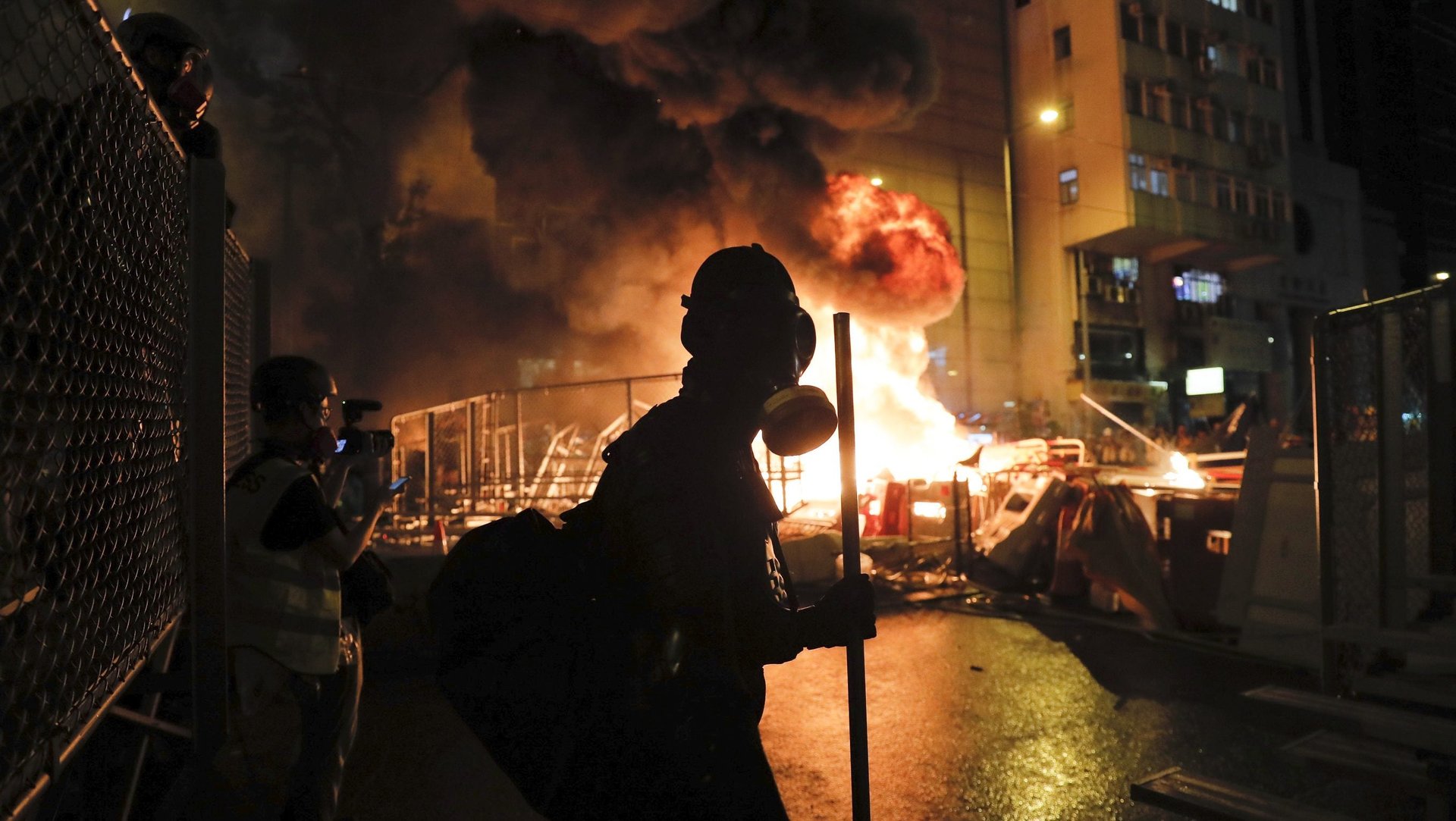

Even though police banned a rally and a march to mark Aug. 31, 2014—the day that set Hong Kong on the path to the Umbrella Movement—Hong Kongers still took to the streets, facing water cannons and tear gas, and setting fires in the city’s business and shopping districts as they faced off with riot police.
It was Hong Kong’s 13th straight weekend of protests this summer, as the city edges closer to the five-year anniversary of the 79-day street occupation in 2014 that got its name from protesters using umbrellas to shield themselves from pepper spray and tear gas.
In 2014, Hong Kong was hoping to see reforms that would allow for the first time direct election of the city’s leader. The title—chief executive—gives away its roots as an appointed head of the territory under British rule, and as a pretty much appointed one after Hong Kong’s return to Chinese control in 1997. While there is a vote for the chief executive, it involves just 1,200 people who have themselves been elected in a byzantine way and are meant to reflect various political and professional sectors of society.
Article 45 of Hong Kong’s Basic Law, the territory’s constitution, says “the ultimate aim is the selection of the Chief Executive by universal suffrage upon nomination by a broadly representative nominating committee.”
In 2012, Beijing pledged to work on bringing in universal suffrage by the 2017 elections and began political consultations on the issue. State-run newspaper China Daily at the time published op-eds with proposals on possible frameworks in its Hong Kong edition. Beijing was to unveil the exact details on Aug. 31, 2014. When Beijing proposed that universal voting would be allowed, but only for candidates who could get the nod from at least half of a nominating committee composed similarly to the one that chooses the chief executive, it was a blow to Hong Kong.
The decision was seen as way to severely limit free elections, in effect reneging on the earlier pledge. Just a month later, the Umbrella Movement began. By the time it ended in December in that year, the protesters were no closer to democracy. But as they cleared the streets they made a promise that their fight wasn’t over. Hong Kong’s legislative council vetoed China’s proposal in June 2015.
In the early afternoon today, people gathered at a sports ground in the Wan Chai area to sing hymns, and then walk to the chief executive’s residence. Police raised flags to warn people they were part of an unlawful assembly.
The original commemorative march that was banned intended to walk to the Beijing’s representative office here, but due to the police presence around it, protesters marched to the government district instead. Along with tear gas, they were met by blue-dyed water from water cannon, possibly to make it easier for police to make arrests later.
While this year’s protests first began in opposition to an extradition bill that would have made it possible to send people to face trial in the mainland, they are at heart also about the city’s lack of democracy—and fears that it’s losing its freedoms and identity.
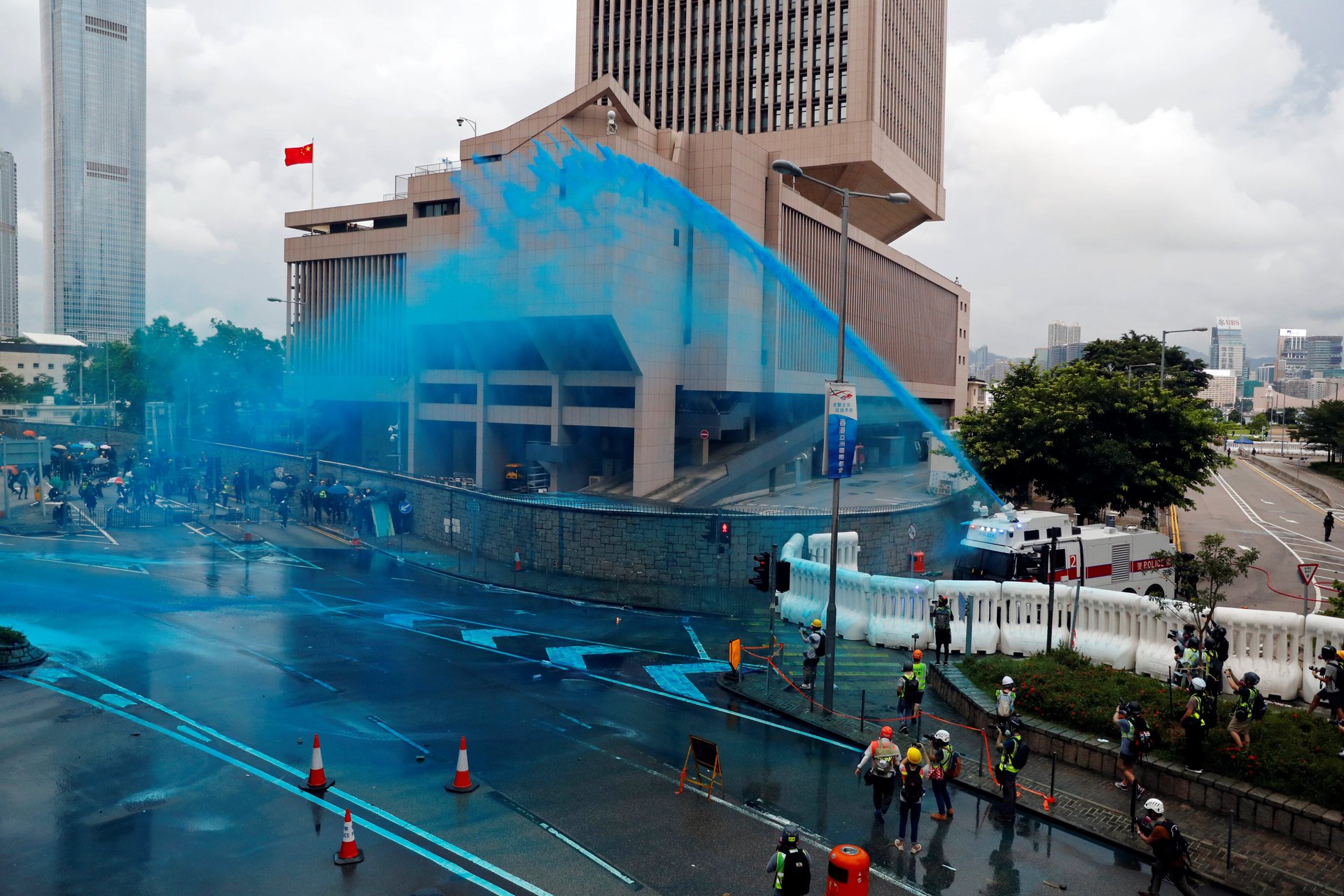
Protesters stockpiled bricks from pavements to throw at the police. Some threw Molotov cocktails. At times, people speculated that some of the protesters carrying out violent acts might be undercover police, especially as some police were dressed as protesters in order to make arrests.
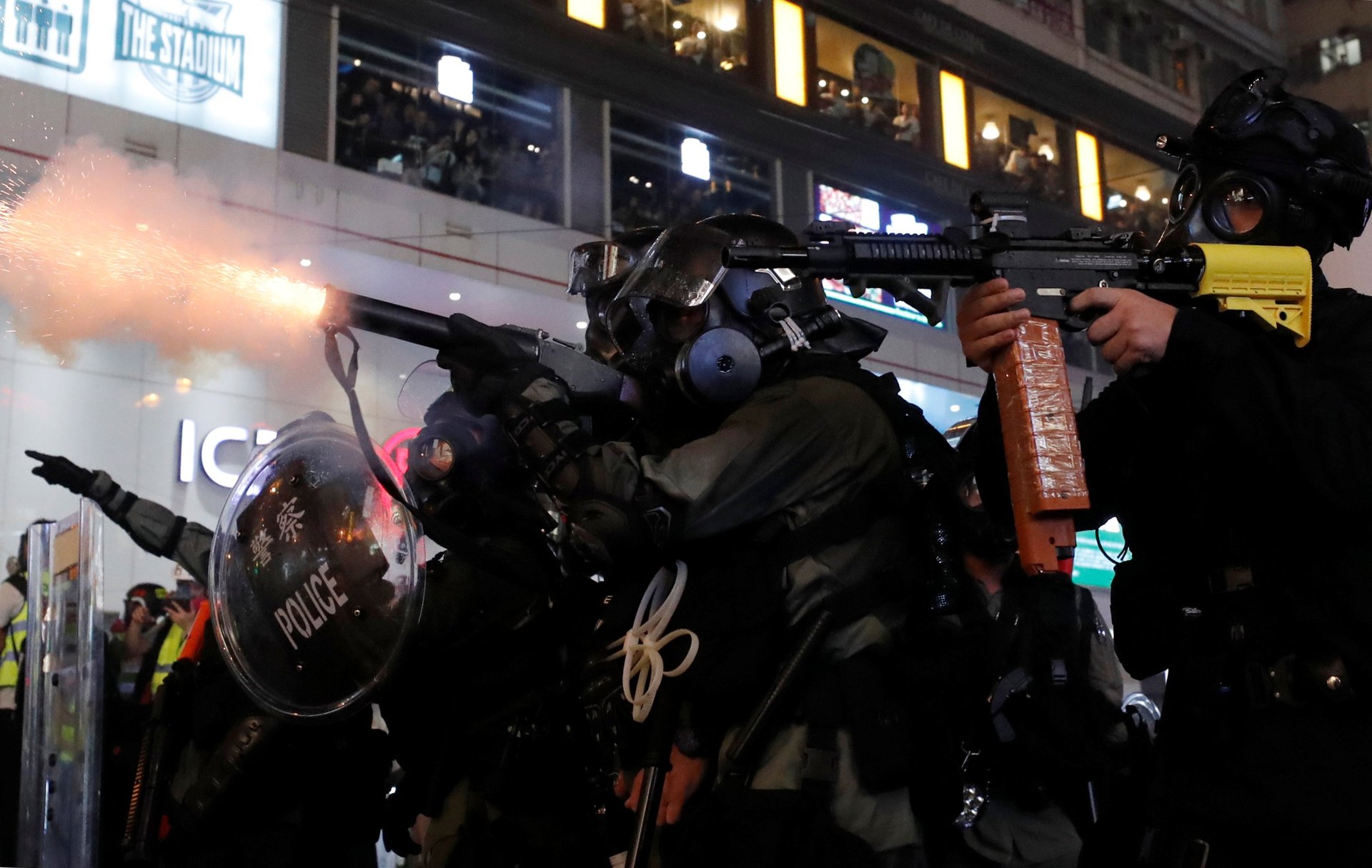
A little after 7pm, protesters started a fire near Hong Kong police headquarters.
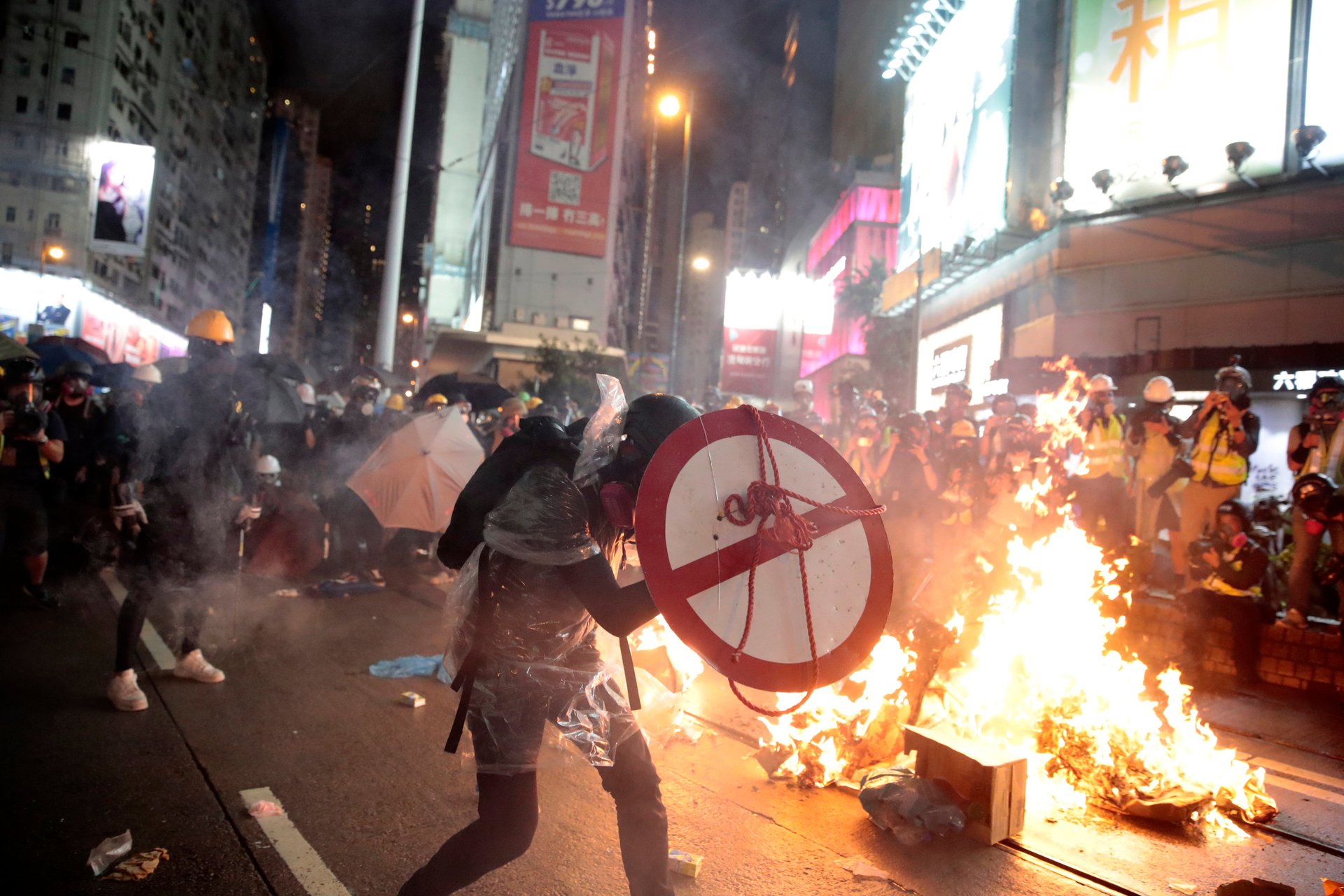
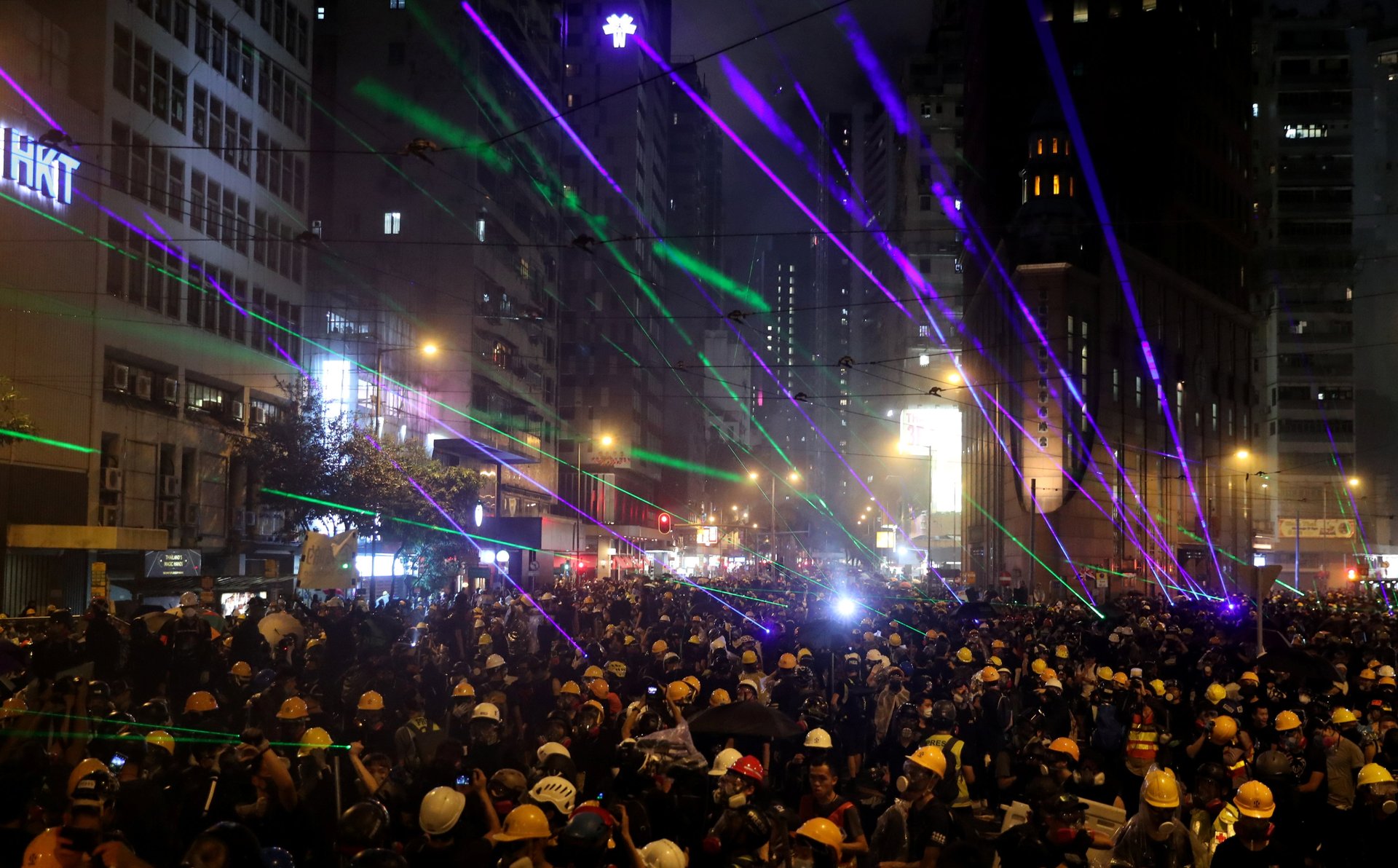
By around midnight, attention had turned to the violent scenes at MTR stations in Kowloon, as police entered stations there and beat protesters on the platform in scenes that for many—barring the uniforms—were reminiscent of the beatings by stick-wielding thugs of suspected protesters and passengers at an MTR station in July. Earlier in the evening police and protesters had clashed in Kowloon’s Tsim Tsa Tsui area, near the city’s largest mosque.